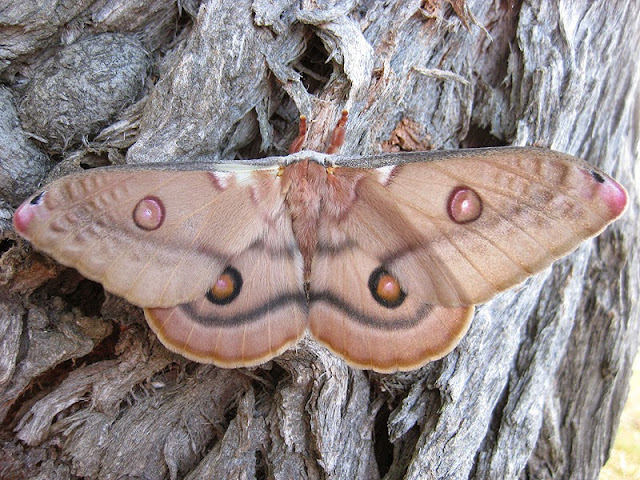Moth Facts Part III
Moth Facts Part III
Source: "2010-01-04 moth1" by Chris Noble - Own work. Licensed under CC BY-SA 3.0 via Wikimedia Commons - http://commons.wikimedia.org/wiki/File:2010-01-04_moth1.jpg#/media/File:2010-01-04_moth1.jpg
1. Some moths never eat anything as adults because they don't have mouths. They must live on the energy they stored as caterpillars.Source: "2010-01-04 moth1" by Chris Noble - Own work. Licensed under CC BY-SA 3.0 via Wikimedia Commons - http://commons.wikimedia.org/wiki/File:2010-01-04_moth1.jpg#/media/File:2010-01-04_moth1.jpg
2. Butterflies and moths hear sounds through their wings.
3. To a moth the jingling sound of car keys sounds like a bat! In defence they will drop to the ground and hope to stay concealed.
4. Thousands of tiny scales and hairs cover moths wings, not powder.
5. Butterflies and moths both have an organ called the Johnston's organ which is at the base of a butterfly or moths antennae. This organ are responsible for maintaining the butterflys sense of balance and orientation, especially during flight.
6. Cecropia moth has the ability to smell his mate up to 7 miles away with his feathery antennae.
7. Moths have a low temperature threshold. Pinions and sallows can be flying when the air temperature was in the low 40's with snow on the ground!
8. Giant Wood Moths are the heaviest moths in the world, weighing over 30g.
9. Some moths taste terrible, and advertise this fact with a warning of bright colours on their bodies and wings. After dark, however, when this visual signal is useless, they emit ultrasonic clicks which can be picked up by insectivorous bats. These clicks warn the bats that the moths are unpleasant to eat, and also jams the bats’ sonar system.
10. Certain moths can detect a 15-watt ultraviolet lamp from a distance of 250m. Nocturnal moths become active when it gets dark.
11. The caterpillars of the Hawk Moth and several other types of moths can change their colour. If they live alone, they are pale, but become dark if they live in dense populations. The colour is controlled by their hormones so that they’re camouflaged in their environment and are less obvious to their predators.
12. The adult Luna Moth does not have a mouth. Luna Moths are members of the giant silkworm family.


Comments
Post a Comment